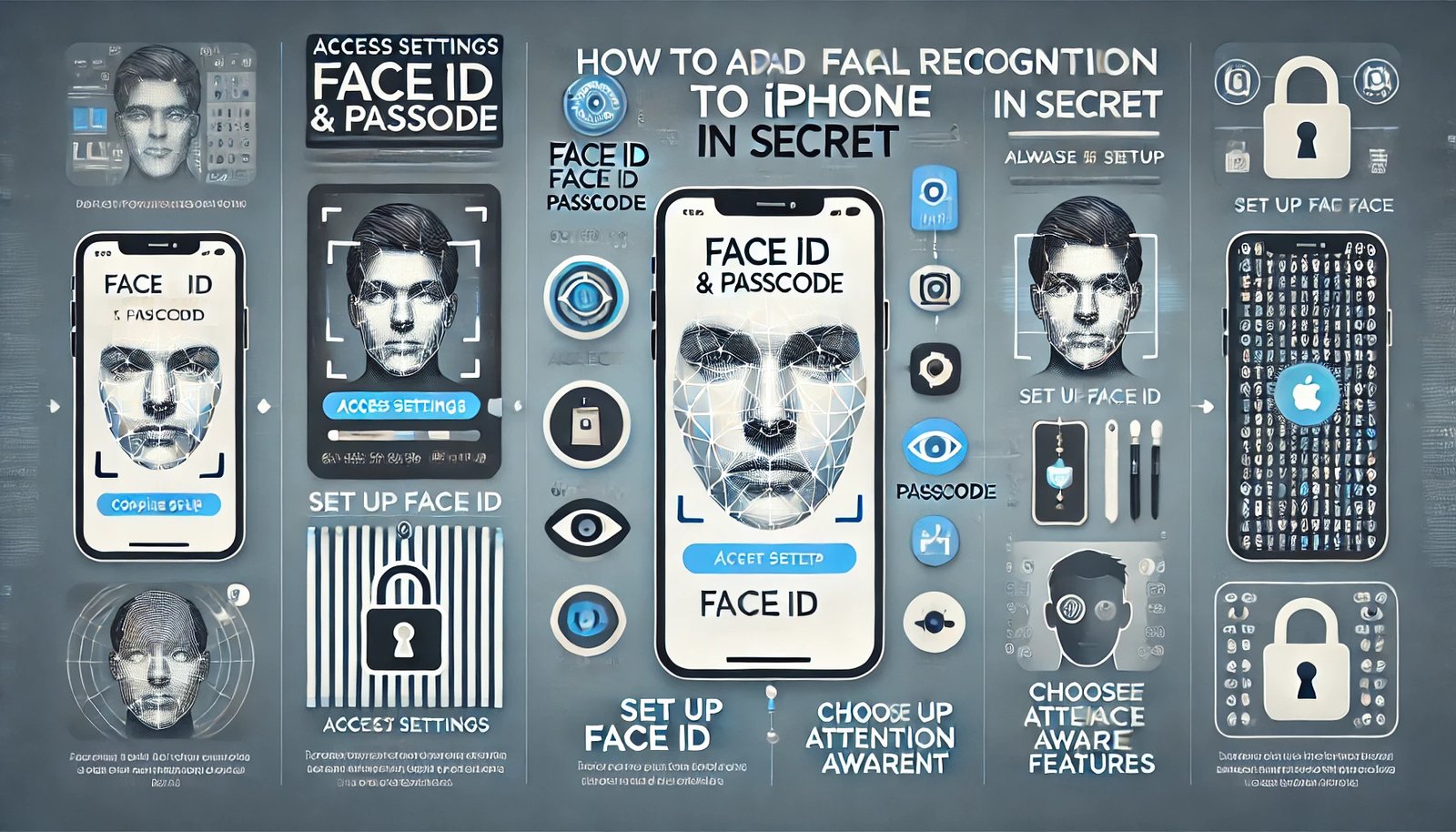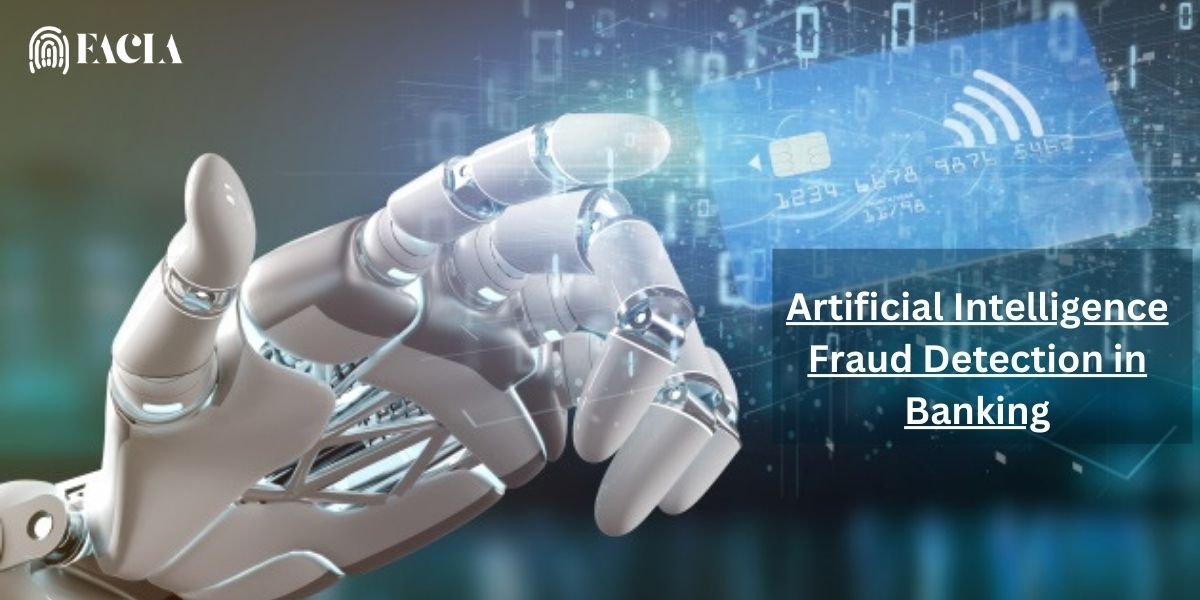In today’s era, people prefer advanced systems like facial recognition or biometric verification for digital identification instead of names or passwords. This way, users don’t need to type anything to verify themselves. Facial recognition technology is not limited to smartphones only; rather, it acts as a game-changer for the entire cybersecurity landscape.
According to a survey by VISA, 86% of people in the USA consider biometric verification more secure compared to traditional passwords. However, every new solution comes with some vulnerabilities. In this article, we’ve highlighted the real-life applications of facial recognition, its benefits, and some challenges.
Continue reading this article to discover more about the facial recognition system in detail.
What Is a Facial Recognition System?
Facial recognition is a powerful biometric technology that can recognize and identify a human face through a camera, digital images, or video. Every person’s face is a unique identity, such as the distance between the eyes, the shape of the nose, the structure of the cheekbones, etc. Facial recognition technology accurately verifies and identifies a person by analyzing these features.
In the 1990s, facial recognition technology was first used by government agencies. But, its use was limited to high-level security and military purposes only. As time passes, artificial intelligence and image processing become advanced that make facial recognition common. Today, facial recognition is widely used in almost all personal devices, such as smartphones (Face ID) and in laptops (Windows Hello).
Facial recognition has brought digital identity into a new age, where users no longer need to perform any specific action to log in.
How Does a Facial Recognition System Work?
Facial Recognition works by analyzing unique features of a human face so that it can establish the unique identity of the user. First, the system recognizes the face from an image, video, or by using a live camera. The analyzed features may include the distances between the eyes, the relative shape of the nose, and the curvature of the cheekbones.
The system then uses these facial features to create a digital code known as a faceprint. The system will store this faceprint for later matching during identification. When the user tries to access it later, the system analyzes and generates a new faceprint and matches the result with the stored faceprint. The system grants the user access if the distinctive features of the two face prints match. However, if the matching fails, then access would be denied to the user.
With the advancement in artificial intelligence (AI) and machine learning (ML) technologies, this process has now become faster and more accurate. For these reasons, it is increasingly used on phones, laptops, in airports, banks, etc.
Applications of the Facial Recognition System
Many industries use facial recognition to enhance user experience and bolster security. Some of the most popular applications of facial recognition include
1. Secure and Smooth Payments
With facial recognition, online payments become easier and way more secure. Just look at the screen and authorize a payment for mobile wallets or stores. While it’s easy to steal passwords and cards, it’s more difficult to replicate a person’s face. For this reason, some banks and stores have implemented live face detection to replace cards and PINs. The checkout became smooth and also reduced fraud cases.
2. Smarter Airport and Border Control
Facial Recognition, used at the airport for identity verification, keeps passengers away from long queues in security checks. Passengers manually check physical IDs at check-in, boarding, or immigration in most cases. Facial recognition detection makes a significant difference in these situations. Several first-world countries, like the U.S., Singapore, and the UAE, have adopted this technology in airports to provide security and enhanced travel experiences.
3. Access Device Made Easy
Almost every phone, tablet, and laptop comes with facial recognition software these days. Users exhibit their faces to the front camera. In one second, the system sees and verifies the face so the user can enter it without a password.
4. Access Control in Workspaces
Numerous workplaces, labs, and even schools have started using facial recognition in their access control systems today. The employees, workers, or students are spotted easily with their faces, and then the time is recorded as well. This approach provides automatic access control with an accurate attendance tracking system.
5. Personalized Retail Experiences
For a much more personalized experience, retailers use facial recognition. The system can identify their regular customers, recommend products based on previous purchases, and even give points without having one of those membership cards. Some stores also utilize it for improved security, as shoplifting decreases by flagging often-shoplifters.
6. Efficiency in Healthcare
Hospitals are now implementing a facial recognition system as a solution for fast-tracking patients from entering and verifying their identities. It drastically reduces the paperwork and human error involved. It could diagnose some rare genetic conditions and assess the mental state of patients during their therapy sessions. This level of personalization in healthcare is unparalleled.
7. Smarter Education Systems
In classes, facial recognition encourages an automated attendance service and even helps teachers understand students’ involvement. Facial expressions are then analyzed, allowing educationists to better gauge interest or confusion. This information will eventually improve the teacher’s methods and timely support.
8. Banking and Financial Security
Many banks have started employing facial recognition for their customer verification processes during online sign-ups and transactions. A few ATMs now even allow withdrawals using just facial data, not cards. The practice gives an added layer of security as the world becomes more digitalized in banking activities.
Key Benefits of Using Facial Recognition
Facial recognition technology has become a powerful tool across many industries for verification and accessibility. Let’s take a look at some of this technology’s key benefits:
1. Enhanced Security and Fraud Prevention
Facial recognition is a biometric security method that is very difficult to steal or copy. Unlike passwords or ID cards, facial recognition poses no risk of loss. Airports, banks, and sensitive buildings use facial recognition for identity verification and online fraud detection.
2. Easy and Contactless Experience
Facial recognition allows users to access their devices without needing to touch, type, or move. Whether unlocking a phone, entering a secure building, or verifying identity at an airport, the user simply needs to display their face. The system is smart and fast enough to verify the face in less than a second.
3. Speed and Improved efficiency.
In crowded places like airports, banks, and hospitals, facial recognition helps speed up security checks. Due to advancements in technology, facial identification and verification happen instantly. This capability has made facial recognition a game-changer for many industries.
4. Personalized Services and Customer Experience
Facial recognition is not limited to just identity verification. Some advanced systems also store specific data along with individual identity. Retail stores identify returning customers and suggest products based on their past purchases. Healthcare providers use this technology to instantly access patient medical records. Facial recognition can monitor the entry and exit times of enrolled individuals in educational institutions and modern offices.
5. Accessibility for People with Special Needs
Sometimes, for people with disabilities, passwords or other biometric methods don’t work. For example, someone without hands cannot type a password or use fingerprint verification. Similarly, someone who is blind can’t use retinal scans. Facial recognition identifies such users easily and prevents any inconvenience they might face.
6. Protection from Identity Theft and Phishing
Criminals often trick people into giving away their passwords, PINs, or OTPs through phishing or social engineering. Facial recognition, which requires a live face for verification, is impervious to theft. This keeps users safe from phishing and social engineering scams.
7. Integration and Scalability
Facial recognition can be easily integrated into various systems. Companies use it for employee check-ins, customer onboarding, and secure access — all through one system. With the help of cloud-based and API-powered tools, it becomes a flexible and scalable solution for almost every industry. Companies can integrate it into their systems and perform multiple tasks like verifying identity, managing secure access, and tracking check-ins.
8. Social Impact and Humanitarian Use
In addition to commercial applications, social and humanitarian missions also utilize facial recognition technology. Law enforcement agencies use it to search for missing persons and track criminals. It also helps improve safety in public spaces. If used ethically, facial recognition can prove highly beneficial for society.
Major Challenges of Facial Recognition Technology
Facial recognition technology brings several technical, ethical, and social concerns that prevent people from fully accepting it. Here are some of these challenges:
1. Privacy and Data Protection
Facial recognition systems store individuals’ facial data digitally to verify their identity later by matching the live face with the stored faceprint. Since this is highly personal and unique data, many people don’t feel comfortable allowing unknown devices to save their facial information. People worry about how this data is being used and whether it might fall into the wrong hands. That’s why protecting user privacy remains the biggest challenge of facial recognition.
2. Incorrect Identification and Algorithm Bias
Sometimes, facial recognition systems fail to identify individuals accurately. According to research, many algorithms easily recognize white men but often fail to correctly identify women, people of color, and the elderly. Other reasons, such as changes in facial appearance due to age, heavy makeup, or the use of beauty products, also pose a major challenge for the technology.
3. Difficulty Working in All Environments
In controlled environments, like passport photos or ID scans where the face is clearly visible from the front, facial recognition works well. However, in real-life situations, poor lighting, continuous movement, or faces seen from different angles can confuse the system. Additionally, things like masks, sunglasses, or facial hair also affect the system’s accuracy.
4. Legal and Ethical Issues
In many places, facial recognition is being used for surveillance through public cameras without informing people. Many consider this unethical and are concerned that their faces are being scanned without their consent. To build public trust, it’s essential to establish clear laws and policies around such verification practices.





